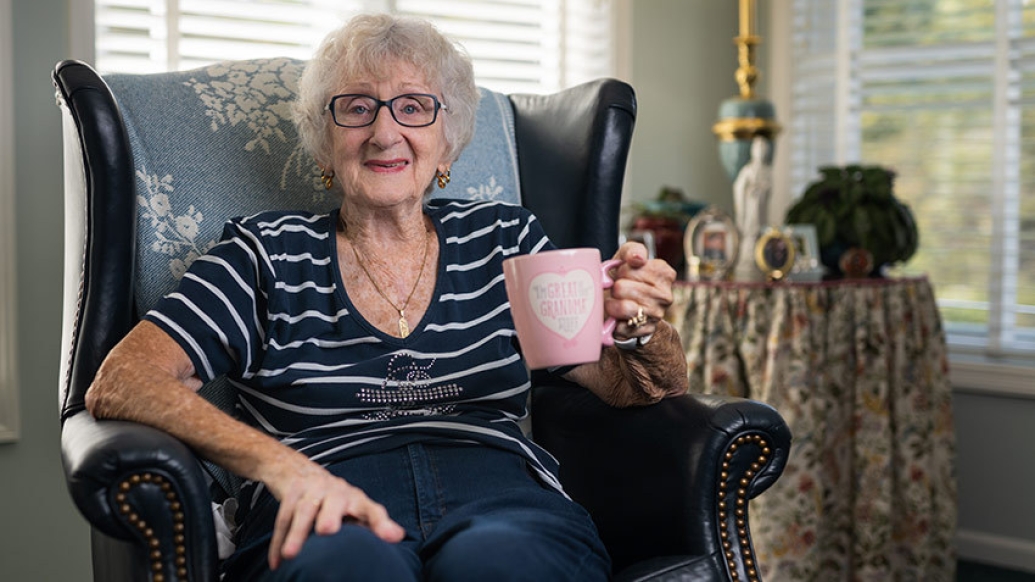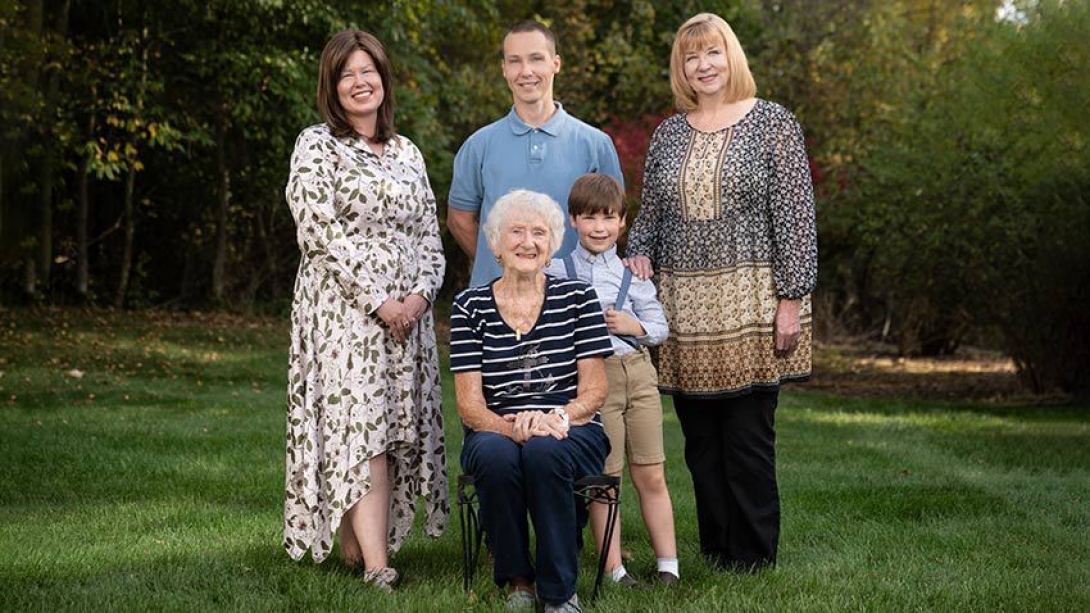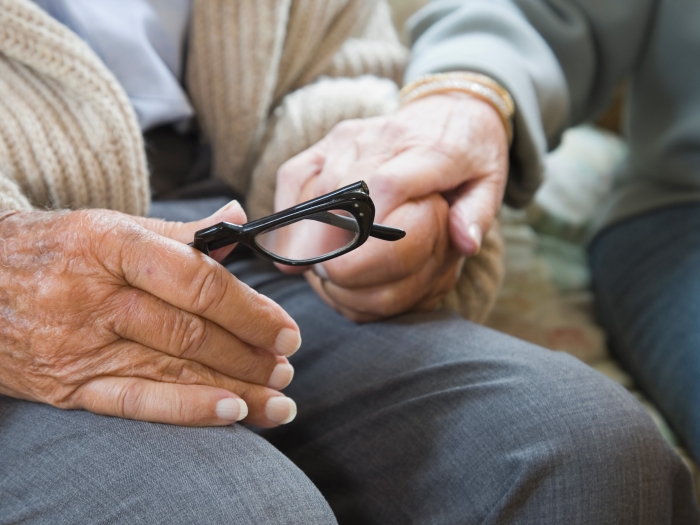The novel procedure allows patients to have their valve replaced with a larger prosthetic, which significantly improves blood flow.
9:28 AM
Author |

Esther Jane Cremean is happy to share her secret to living a long, happy life: "Laugh and have fun," said the 85-year-old mother, grandmother and great grandmother.
But she doesn't discount the role that skilled doctors and breakthrough surgical innovations have also played in her life.
Cremean's health became concerning to her primary physician who had been monitoring a heart murmur, discovered years ago. With the murmur sounding louder at her yearly exam last October, Cremean's doctor ordered an echocardiogram along with a few other tests.
"She wanted to cover all the bases," said the Lansing, Michigan, resident.
Several days later, an unexpected call from her area hospital requested Cremean come in for additional testing, followed by a consultation with a cardiologist.
An unexpected diagnosis
"The doctor told me I had a very large aortic aneurysm and aortic valve stenosis," Cremean said, noting that she hadn't experienced symptoms other than slight fatigue, which hadn't prevented her from keeping up with daily housework and yardwork.
To complicate matters, Cremean was also diagnosed with a bicuspid aortic valve, a congenital defect often going undiscovered until later in life. The aortic valve in a typical healthy heart has three flexible leaflets (also known as flaps or cusps) that open and close to send oxygenated blood from the heart to the aorta. A person with a bicuspid aortic valve has only two leaflets. Over time, the bicuspid aortic valve leaflets can thicken and calcify, a condition known as aortic valve stenosis. When this happens, the heart is forced to pump harder than usual to get blood through the very narrowed valve and into the body.
An aortic aneurysm, or enlargement of the ascending aorta, is another complication of a bicuspid aortic valve.
Cremean was challenged with both. "I had to make a decision about what to do," she said.
Given her age and condition, surgery would be risky. The initial recommendation was for a transcatheter aortic valve replacement, or TAVR procedure. During this minimally invasive surgery, the aortic valve is accessed via a catheter guided through the femoral artery. The valve is then replaced without the need for an open heart procedure.
Innovative technique benefits more patients
Cremean was referred to the University of Michigan Health Frankel Cardiovascular Center where she met with cardiac surgeon Bo Yang, M.D., via a telehealth appointment. It was during this call that she discovered she wasn't a candidate for TAVR.
MORE FROM MICHIGAN: Sign up for our weekly newsletter
"TAVR was not an option because of the patient's large aneurysm and very small aortic root and aortic valve annulus (the base of the aortic root)," said Yang, who has developed a novel procedure to enlarge a patient's aortic root and valve annulus by three or four valve sizes to accommodate a new and much larger prosthetic valve.

Known as the Y-incision/rectangular patch root enlargement, "The procedure enlarges the size of the 'door' (the valve) and the 'house' (aortic root). We make the house bigger so we can add a bigger door to allow the blood to flow better," explained Yang. "We put new walls on the house by using a rectangular patch made of synthetic material to enlarge the house (aortic root).
Yang has trained surgeons throughout the world on how to perform this breakthrough technique. The first such development in open heart surgery in more than 40 years, it allows patients who would not typically be candidates for a larger valve due to the small size of their aortic root and annulus to have their aortic valve successfully replaced with a much larger prosthetic valve.
"It's more effective than traditional procedures such as Nicks and Manouguian, procedures, which enlarge the aortic root by only up to 1 or 2 sizes, and is simpler than the Manouguian procedure," Yang said of his game-changing procedure. "It also causes no damage to surrounding areas of the heart, including the mitral valve, the chambers of the heart and the heart's conducting system."
A confident decision
Cremean said she didn't have to think twice about undergoing surgery last February, despite the fact that it would be an open heart procedure. "My decision was easy once I met with Dr. Yang. He was very consoling," she said.
Nearly seven months post-surgery, "The patient is very strong and doing well," said Yang. "We increased her aortic annulus by three valve sizes — from size 21 to 27 — to give her a much bigger valve, which significantly improved blood flow, and also repaired her aneurysm."
Yang expects Cremean's open heart procedure will allow her to continue living a healthy, active life. Looking ahead, the increase in the size of her aortic root and valve "sets her up for a future minimally invasive TAVR procedure, if needed."
Cremean said she's recovered remarkably well from her surgery and is enjoying her life.
"I'm still living alone and doing my own thing," said the woman who advocates for laughing and having fun — and who feels she found the right doctor at the right time.
"Dr. Yang is such a good guy. He's so much fun." But more important, she said, "He's a skilled doctor with so much compassion."
Like Podcasts? Add the Michigan Medicine News Break on iTunes, Google Podcasts or anywhere you listen to podcasts.

Explore a variety of healthcare news & stories by visiting the Health Lab home page for more articles.

Department of Communication at Michigan Medicine
Want top health & research news weekly? Sign up for Health Lab’s newsletters today!





